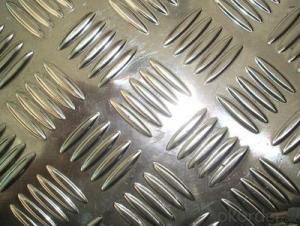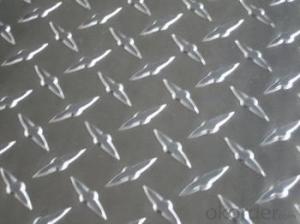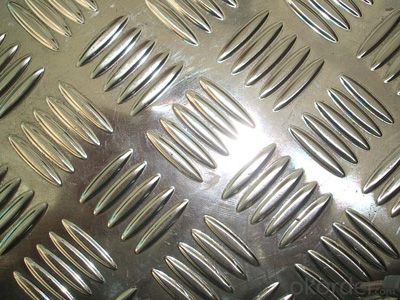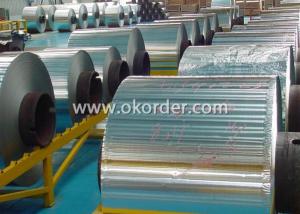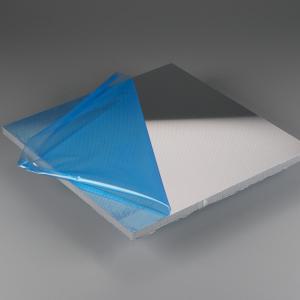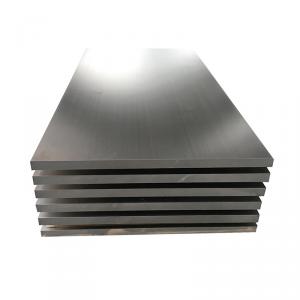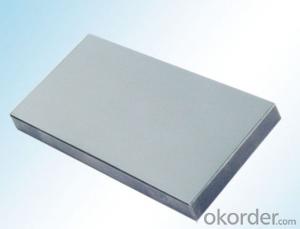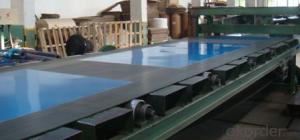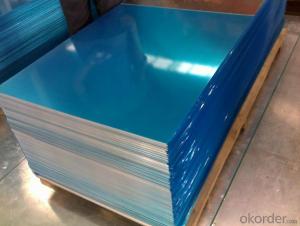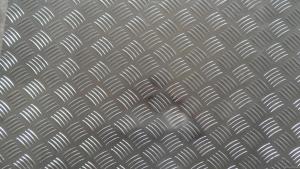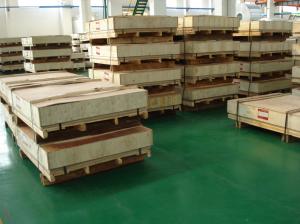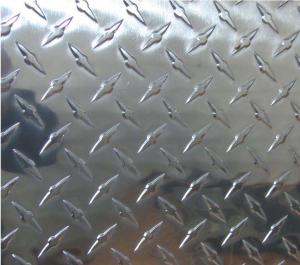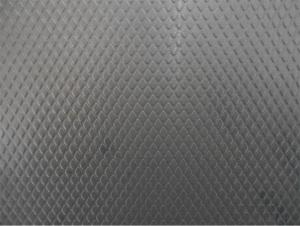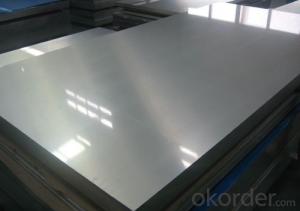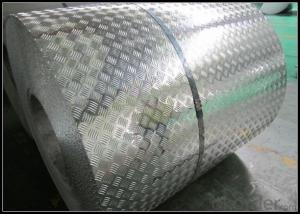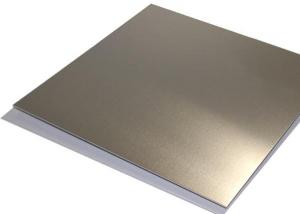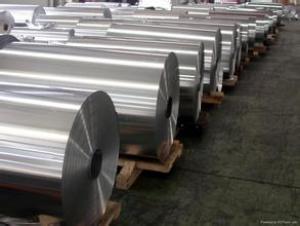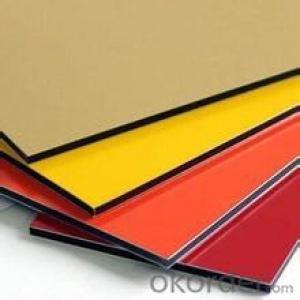Diamond Aluminum Silicon Carbide Embossing Sheets
- Loading Port:
- Shanghai
- Payment Terms:
- TT OR LC
- Min Order Qty:
- 1 m.t.
- Supply Capability:
- 1999 m.t./month
OKorder Service Pledge
OKorder Financial Service
You Might Also Like
Specification
1100-H14-DIAMOND EMBOSSED ALUMINUM SHEET
Thickness:1.2mm---4mm,
width:1000mm---1500mm
Product code: 618 a - 33 y titanium matte aluminum plate
Technical parameters
Aluminum alloy/material: 1100
Tensile strength N/was: 115-125
The yield strength of N/was: 150-150
Elongation % : 3 or more
Rainbow degrees: no
Process: light oxidation process
Product description: surface "colored metal silken face" as the main characteristics of the product, completely metal texture, color variety, products can be mild tensile and bending.
Product use: can be used to directly shape stamping, screen printing, thermal transfer two composite process, etc.Used in architectural decoration, household appliances, switch panel, auto parts, lamps lighting, electronic hardware and other industries.
Supply scope of coil or sheet
Mm thickness specification: 0.4 1
Maximum width mm: 1250
The tolerance range
Mm thickness: 0.02 mm
The width of the mm: 2 -
Mm length: 2 -
Actual weight kg: plus or minus 2
Protective film
Protective film on the surface of the aluminum quality assurance period for six months, aluminum is kept dry and ventilated, avoid heat and direct sunlight.If the aluminium material stored in high temperature or direct sunlight can cause protective film, or unable to tear in addition to wait for a phenomenon.
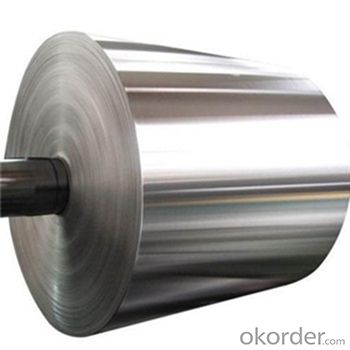
- Q: Can aluminum sheets be used for insulation cladding?
- Yes, aluminum sheets can be used for insulation cladding. Aluminum is a lightweight and durable material that has excellent thermal conductivity properties. It can effectively reflect heat and prevent the transfer of thermal energy, making it an ideal choice for insulation cladding. Additionally, aluminum sheets are resistant to corrosion, moisture, and fire, further enhancing their suitability for insulation applications. Overall, using aluminum sheets for insulation cladding can help improve energy efficiency, reduce heat loss, and enhance the overall performance of a building or structure.
- Q: How do you prevent distortion of aluminum sheets during welding?
- Distortion of aluminum sheets during welding can be prevented by implementing several measures. Firstly, utilizing proper welding techniques such as using appropriate heat input, controlling the welding speed, and using a suitable welding process can minimize distortion. Additionally, employing proper fixturing and clamping techniques to secure the sheets in place during welding can help maintain their shape. Pre-heating or post-weld heat treatment can also be employed to alleviate residual stresses and minimize distortion. Lastly, selecting the right filler material and adjusting its composition can aid in reducing distortion during the welding process.
- Q: Can aluminum sheets be bent without breaking?
- Yes, aluminum sheets can be bent without breaking. Aluminum is a highly malleable and ductile metal, which means it can be easily shaped and bent without fracturing or cracking. This property makes aluminum an ideal material for various applications, including the manufacturing of aircraft, automobiles, and household items. The flexibility of aluminum sheets allows for the creation of intricate designs and complex shapes, making it a highly versatile material. However, it is important to note that the thickness and grade of the aluminum sheet can influence its bendability. Thicker sheets may require more force and specialized tools to achieve the desired bend, while softer grades of aluminum may be more easily bent.
- Q: Can aluminum sheets be bent into complex shapes?
- Indeed, it is possible to bend aluminum sheets into intricate forms. Aluminum, being a remarkably malleable and ductile metal, can be easily molded and shaped without any risk of fracture or damage. Consequently, it is highly suitable for fabricating detailed and elaborate structures in a multitude of sectors, including automotive, aerospace, construction, and many others. The procedure for bending aluminum sheets into complex shapes generally entails the utilization of specialized apparatus such as press brakes or rollers, which exert force and shape the desired form. By employing appropriate techniques and equipment, aluminum sheets can be skillfully curved, angled, and even fashioned into elaborate patterns with utmost precision and accuracy.
- Q: This question asks for an explanation of the various types of coatings applied to aluminum sheets that are used outdoors.
- <p>Aluminum sheets used for exterior applications are often coated to enhance their durability, weather resistance, and aesthetic appeal. The different types of coatings include: 1. Anodizing, which creates a protective oxide layer on the aluminum surface. 2. Powder coating, a dry finishing process that provides a uniform and durable finish. 3. PVDF (Polyvinylidene Fluoride) coating, known for its excellent resistance to UV rays and chemicals. 4. Fluorocarbon coatings, which offer superior resistance to weathering and color retention. 5. Electrolytic coating, which involves the application of a thin protective layer through an electrochemical process. Each coating type has specific properties that make it suitable for different exterior applications and environmental conditions.</p>
- Q: Can 101 aluminum sheets be anodized for outdoor architectural applications?
- Yes, 101 aluminum sheets can be anodized for outdoor architectural applications.
- Q: Where is a good website to get a brand new sealed in box Aluminum macbook.
- there are none, i know i sucked it up and went to apple, worth every penny. good luck!
- Q: Are aluminum sheets suitable for storage tanks?
- Yes, aluminum sheets can be suitable for storage tanks depending on the specific requirements and purpose of the tank. Aluminum is a lightweight and corrosion-resistant material, making it an excellent choice for various storage applications. It offers good structural integrity and durability, with the ability to withstand harsh environments and weather conditions. Additionally, aluminum has a high strength-to-weight ratio, which means it can handle heavy loads while remaining relatively lightweight. However, it is important to consider the contents of the storage tank and consult with experts to ensure that aluminum is the appropriate material choice for the specific storage requirements.
- Q: Can the aluminum sheets be used for manufacturing aircraft parts?
- Yes, aluminum sheets can be used for manufacturing aircraft parts. Aluminum is a lightweight and durable material that is commonly used in the aerospace industry. It possesses excellent strength-to-weight ratio, corrosion resistance, and good formability, making it suitable for various aircraft applications. Aluminum sheets can be easily fabricated into complex shapes and are used to manufacture components such as wings, fuselages, panels, and structural supports in aircraft. Additionally, aluminum's high conductivity allows for efficient heat dissipation in critical areas of the aircraft. Overall, aluminum sheets are a preferred choice for manufacturing aircraft parts due to their favorable properties and reliability in the aerospace industry.
- Q: What is the typical fatigue life of aluminum sheets?
- The fatigue life of aluminum sheets can vary depending on several factors such as the alloy used, sheet thickness, manufacturing process, and the specific application they are used for. Generally, aluminum sheets have a higher fatigue strength compared to other materials, allowing them to endure numerous cyclic loading cycles before failure. However, it is important to consider that fatigue life can be influenced by different factors including stress levels, loading conditions, and environmental elements like temperature and humidity. When aluminum sheets are exposed to high stress levels, cyclic loading, or harsh environmental conditions, their fatigue life may decrease. In certain applications where aluminum sheets are subjected to low stress levels or are not exposed to cyclic loading, they can have an unlimited fatigue life. Conversely, in high-stress applications or when subjected to cyclic loading, aluminum sheets typically have a limited fatigue life that can range from thousands to millions of cycles. To accurately determine the fatigue life of aluminum sheets for a specific application, it is recommended to refer to relevant industry standards, test data, or consult with material engineers or manufacturers who can provide more precise information based on the specific parameters and usage conditions.
Send your message to us
Diamond Aluminum Silicon Carbide Embossing Sheets
- Loading Port:
- Shanghai
- Payment Terms:
- TT OR LC
- Min Order Qty:
- 1 m.t.
- Supply Capability:
- 1999 m.t./month
OKorder Service Pledge
OKorder Financial Service
Similar products
Hot products
Hot Searches
Related keywords
